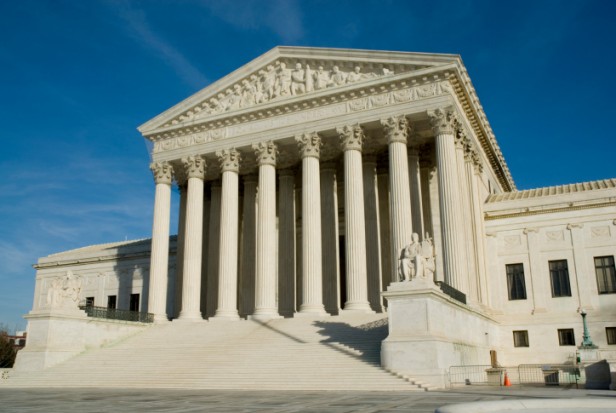Features

The False Claims Act Seal: The DOJ's Position
<b><i>Part Two of a Three-Part Article</i></b><p>Notwithstanding the absence of an explicit gag order in the statute, the DOJ takes the position that, even if the relator properly files the case under seal at the outset, that relator can later “breach the seal,” and be subject to judicial sanction, if he or she discloses the existence of the <i>qui tam</i> to others.
Features

The False Claims Act Seal: Does It Bind and Gag the Defendant?
<b><i>Part One of a Two-Part Article</i></b><p>A company that finds itself the target of a federal fraud investigation often faces the fraught question of whether it may, or even must, disclose the existence of that investigation to third parties, such as its investors, shareholders, major creditors, or insurers. The question can be even more complicated if that investigation is being pursued under the False Claims Act and arises as the result of a sealed <i>qui tam</i> complaint.
Features

Internal Whistleblowers
<b><i>SCOTUS Review of Dodd-Frank to Change the Landscape</i></b><p>In June, the Supreme Court granted <i>certiorari</i> in <i>Digital Realty Trust Inc. v. Somers</i>, to review a Ninth Circuit decision regarding SEC whistleblowing protections. The Court's ruling is highly anticipated, as it will clarify the landscape for whistleblower protections.
Features

Follow Up on False Claims Act Actions
The authors discuss several steps to take in order to avoid the pitfalls that could accompany lengthy exposure vis-à-vis state false claims actions.
Features

Internal Whistleblowers
<b><i>Scotus Review of Dodd-Frank to Change the Landscape</i></b><p>On June 26, 2017, the Supreme Court granted <i>certiorari</i> in <i>Digital Realty Trust Inc. v. Somers</i>, to review a U.S. Court of Appeals for the Ninth Circuit decision regarding SEC whistleblowing protections. The Court's ruling is highly anticipated, as it will clarify the landscape for whistleblower protections.
Features

Follow Up on False Claims Act Actions
This article discusses what you can do to mitigate against the risk inherent in prolonged exposure. While a 50-state survey is beyond the scope of this article, the authors identify issues that should be on the forefront of your mind if faced with potential state false claims act liability.
Features

<b><I>Escobar's</I></b> Effect on False Claims Act <b><I>Qui Tam</I></b> Actions
The Supreme Court, in <I>Universal Health Servs., Inc. v. United States ex rel. Escobar</I>, altered the landscape for FCA litigation. In this case, the Supreme Court instructed lower courts to scrutinize the materiality of the false statements to the government's decision to pay a claim; in doing so, the Court raised the bar for successful prosecution of <I>qui tam</I> claims.
Features

The Trump Administration and Compliance
<b><I>What Can We Tell So Far?</I></b><p>How can companies plan for enforcement under the Trump administration? Here are five areas of compliance to consider.
Features

The Scope of the Dodd-Frank's Whistleblower Protection
Is a corporate employee who reports an employer's possible violation of the securities laws to a supervisor or internal compliance officer — but not to the SEC — considered a "whistleblower" entitled to protection from retaliation under Dodd-Frank? Courts that have considered this question have reached differing conclusions.
Features

The Continuing Evolution of the False Claims Act
The number of lawsuits brought under the False Claims Act (FCA) continues to increase. In 2015 alone, relators filed over 600 qui tam complaints — and courts awarded over $3.5 billion — under the FCA.
Need Help?
- Prefer an IP authenticated environment? Request a transition or call 800-756-8993.
- Need other assistance? email Customer Service or call 1-877-256-2472.
MOST POPULAR STORIES
- The 'Sophisticated Insured' DefenseA majority of courts consider the <i>contra proferentem</i> doctrine to be a pillar of insurance law. The doctrine requires ambiguous terms in an insurance policy to be construed against the insurer and in favor of coverage for the insured. A prominent rationale behind the doctrine is that insurance policies are usually standard-form contracts drafted entirely by insurers.Read More ›
- A Lawyer's System for Active ReadingActive reading comprises many daily tasks lawyers engage in, including highlighting, annotating, note taking, comparing and searching texts. It demands more than flipping or turning pages.Read More ›
- The Brave New World of Cybersecurity Due Diligence in Mergers and Acquisitions: Pitfalls and OpportunitiesLike poorly-behaved school children, new technologies and intellectual property (IP) are increasingly disrupting the M&A establishment. Cybersecurity has become the latest disruptive newcomer to the M&A party.Read More ›
- Abandoned and Unused Cables: A Hidden Liability Under the 2002 National Electric CodeIn an effort to minimize the release of toxic gasses from cables in the event of fire, the 2002 version of the National Electric Code ("NEC"), promulgated by the National Fire Protection Association, sets forth new guidelines requiring that abandoned cables must be removed from buildings unless they are located in metal raceways or tagged "For Future Use." While the NEC is not, in itself, binding law, most jurisdictions in the United States adopt the NEC by reference in their state or local building and fire codes. Thus, noncompliance with the recent NEC guidelines will likely mean that a building is in violation of a building or fire code. If so, the building owner may also be in breach of agreements with tenants and lenders and may be jeopardizing its fire insurance coverage. Even in jurisdictions where the 2002 NEC has not been adopted, it may be argued that the guidelines represent the standard of reasonable care and could result in tort liability for the landlord if toxic gasses from abandoned cables are emitted in a fire. With these potential liabilities in mind, this article discusses: 1) how to address the abandoned wires and cables currently located within the risers, ceilings and other areas of properties, and 2) additional considerations in the placement and removal of telecommunications cables going forward.Read More ›
- Guidance on Distributions As 'Disbursements' and U.S. Trustee FeesIn a recent case from the Bankruptcy Court for the District of Delaware, In re Paragon Offshore PLC, the bankruptcy court provided guidance on whether a post-plan effective date litigation trust's distributions constituted disbursements subject to the U.S. Trustee fee "tax."Read More ›
